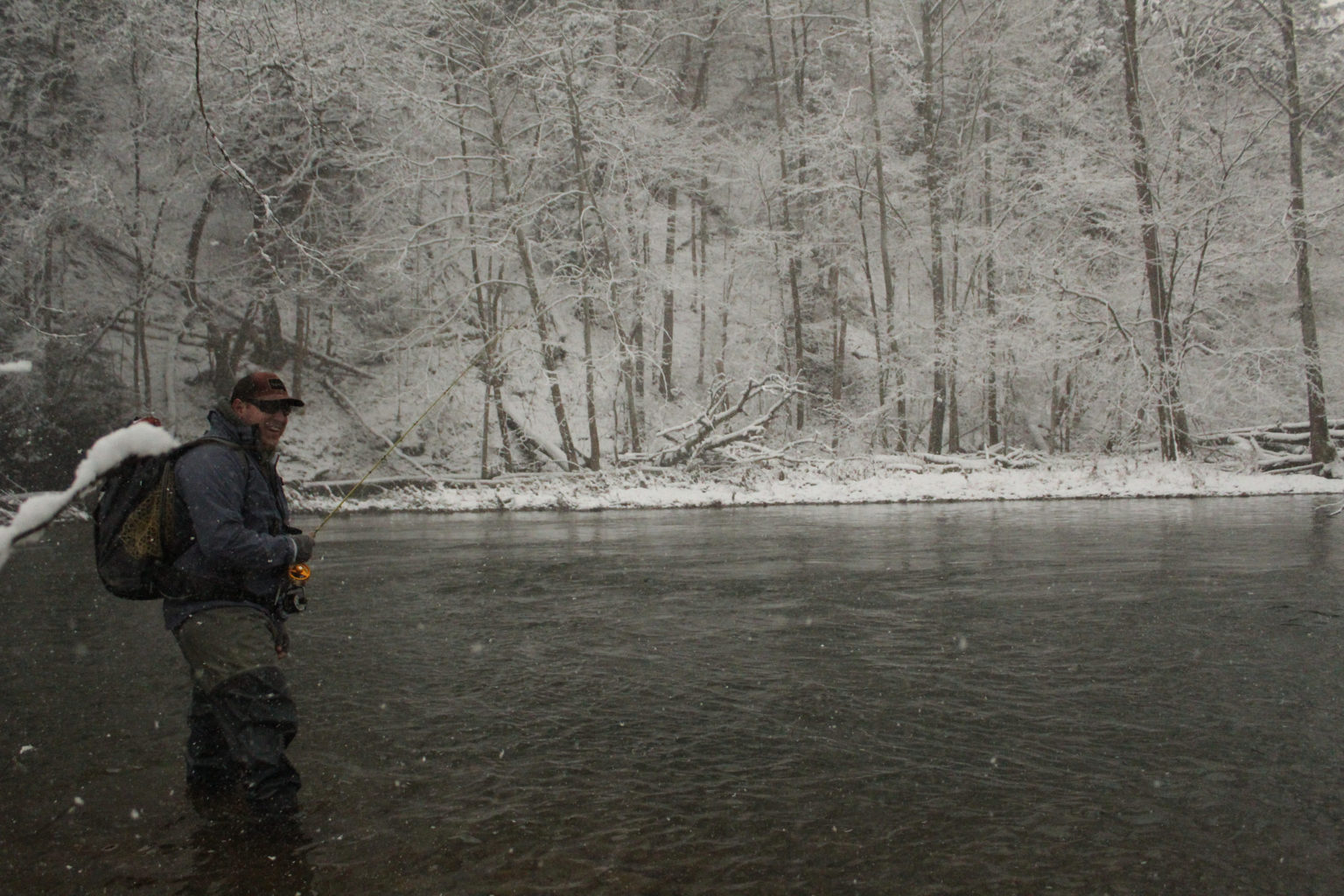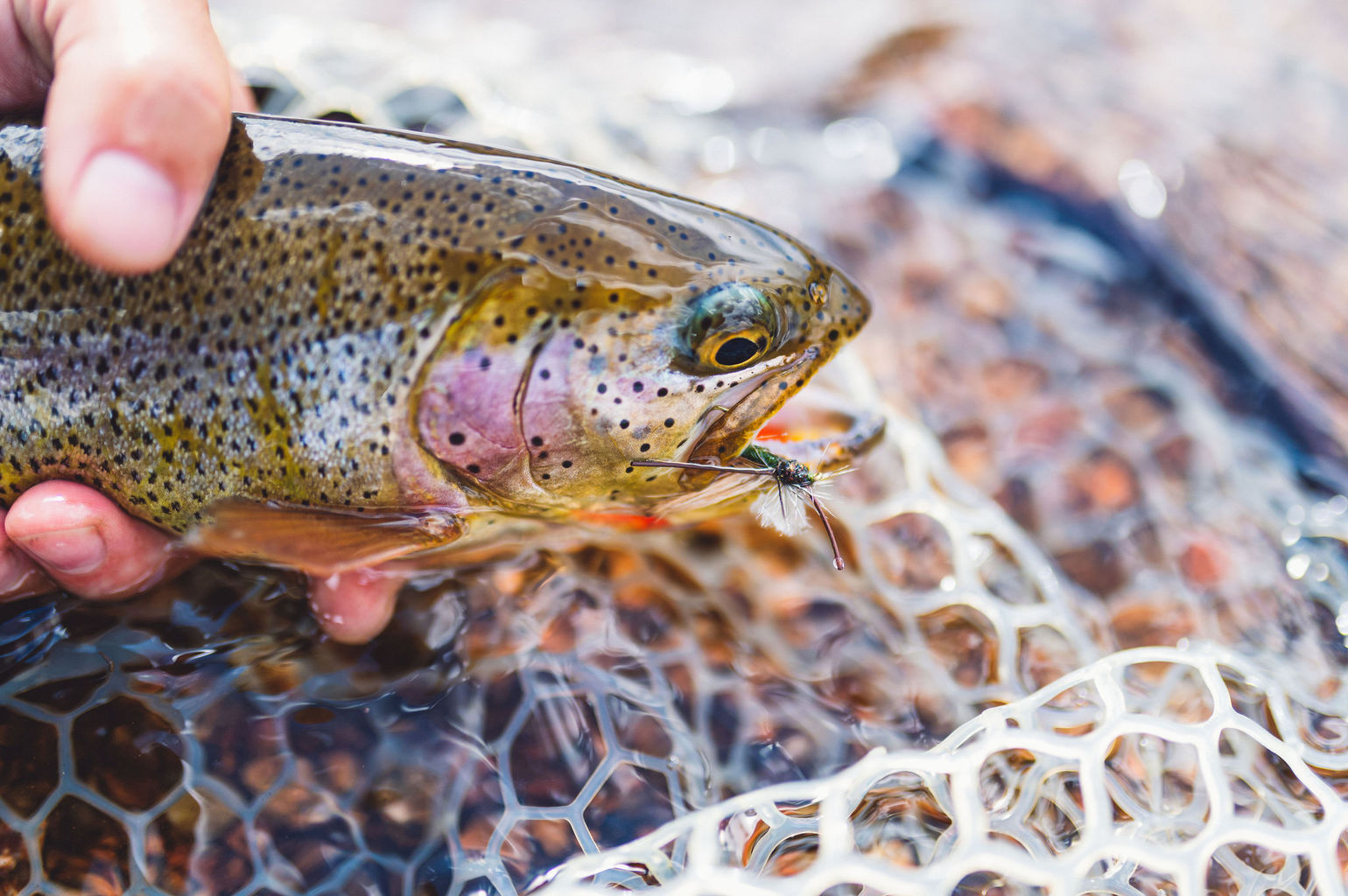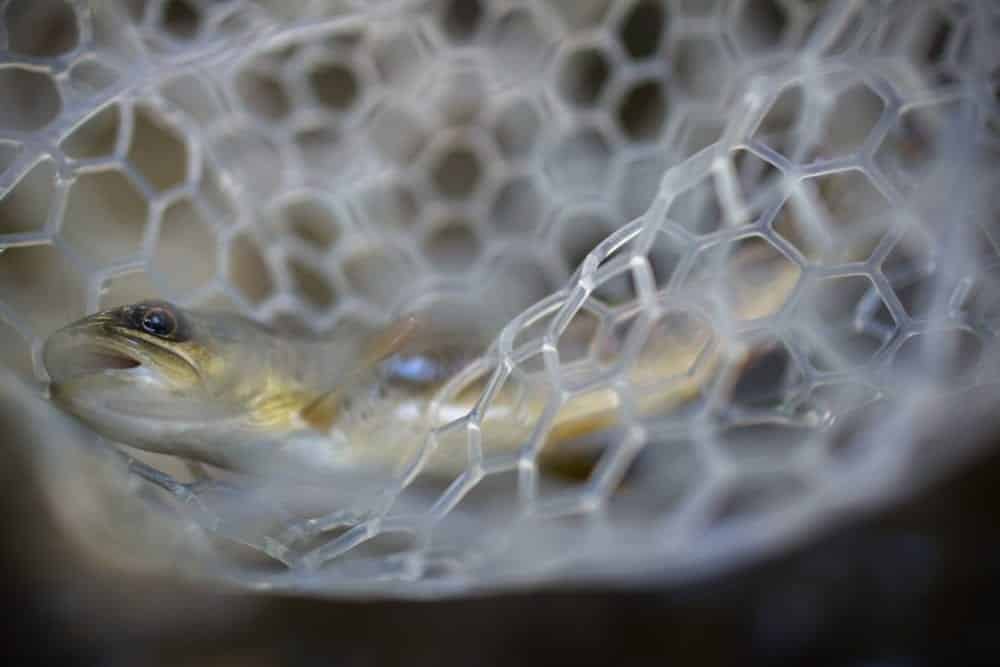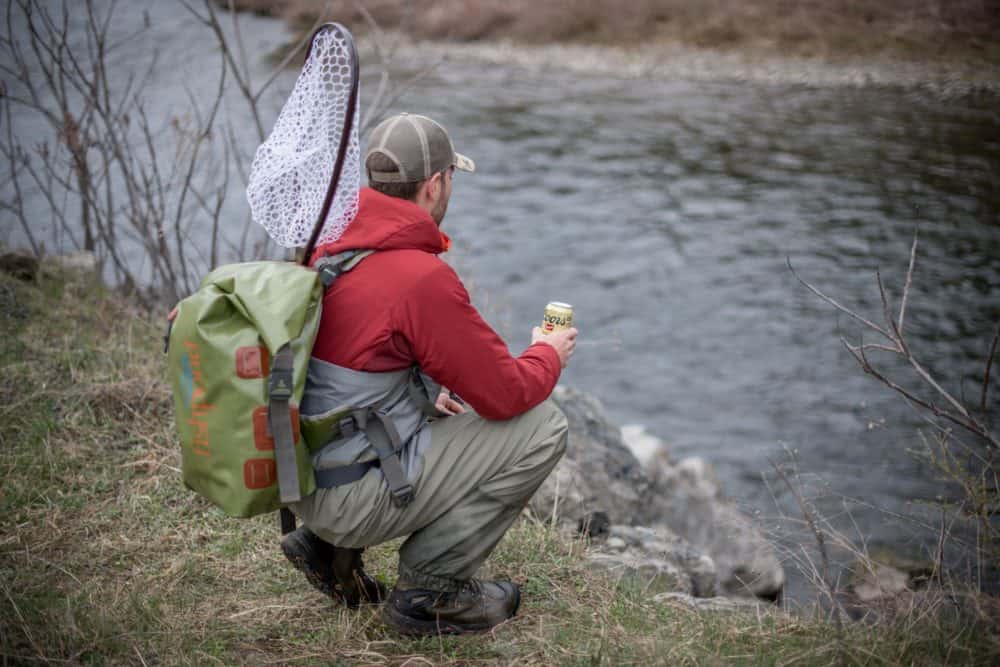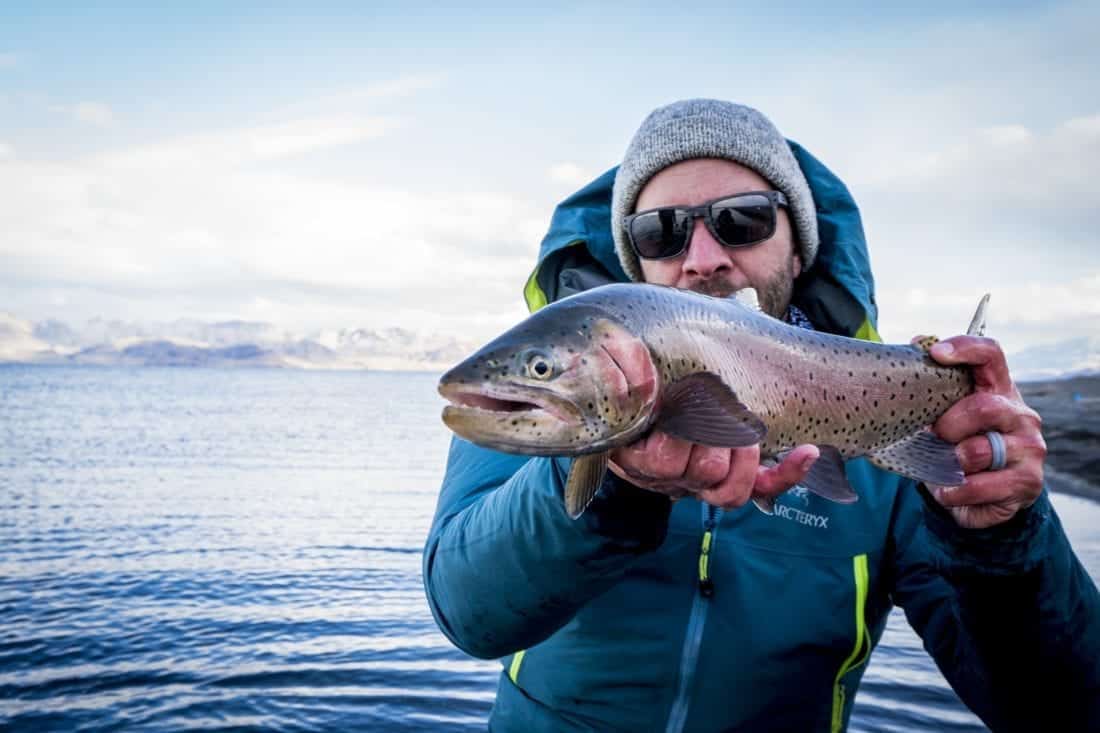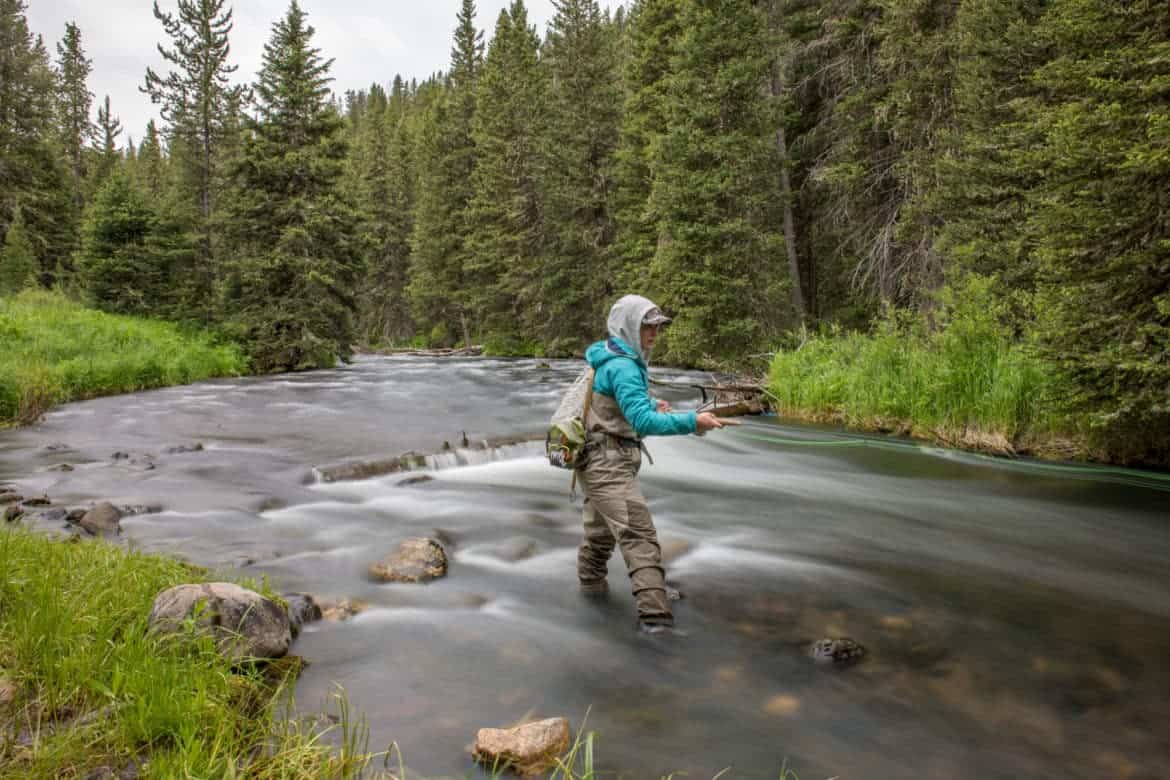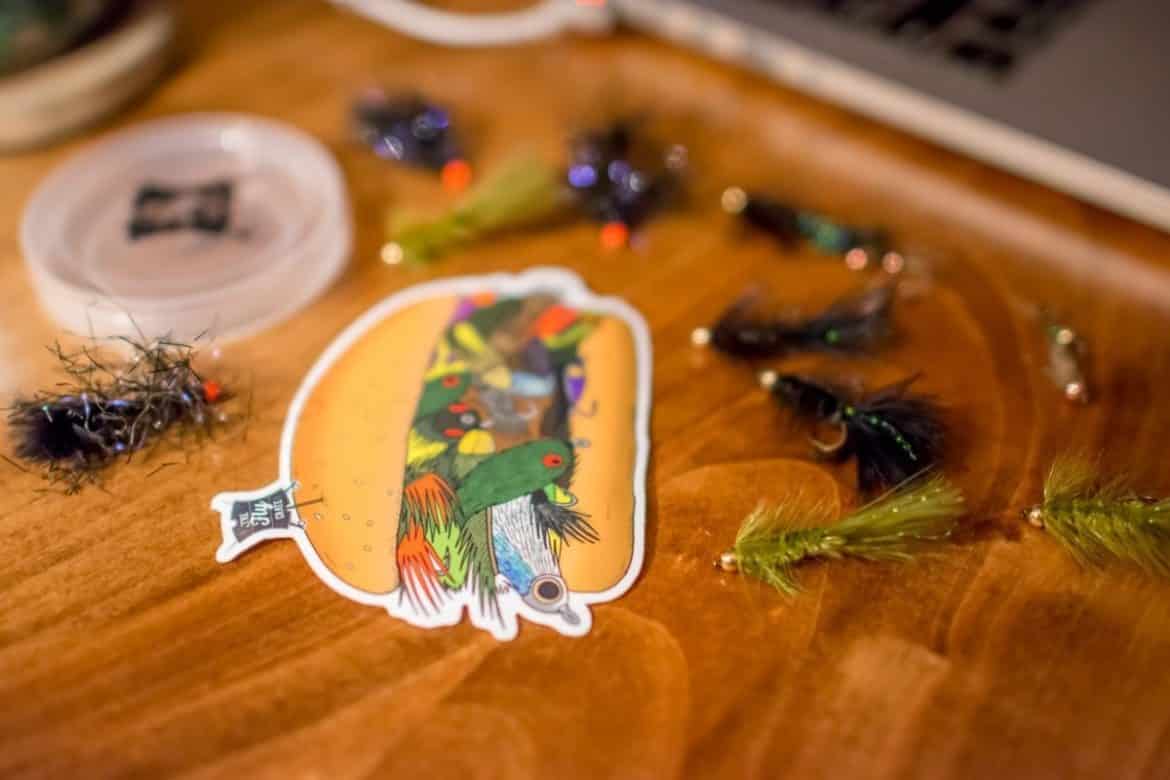How To Fly Fish Montana: Everything You Need To Know
It could be argued that Montana is the epicenter of trout fishing in North America. Whether you agree with that statement or not, it is fair to say there is an enormous amount of fishable water in Montana. Montana has a different feel too. Difficult to convey in words, Montana has topography and history that personifies the American West. It further sets itself apart from other destinations with excellent trout fishing. Put it all together, Montana is a world class fishing destination for anglers both beginners and experts.
While the state is geographically large, we will discuss some of the best trout streams the Oro Y Plata state has to offer. The majority of these streams are in the Western part of the state. As all articles like this go, it is impossible to cover every great fly fishing spot in Montana.
The goal of this paper is to help anglers who have never visited the state or would like to visit the state and need a place to start. It should be noted, that we are not going to attempt to cover any rivers in Yellowstone National Park. Yellowstone National Park is a separate category unto itself, with gems like the Firehole and Gibbon Rivers.
None of the areas that we will discuss are secrets, and all of them offer trout fishing in an iconic setting with plenty of trout and lots of scenery. Many have rightfully taken their fabled place Western folklore and North American fly fishing. For any Montanans reading this article, you don’t have to worry about us burning your favorite spots. This is intended for anglers who dream of heading West and just need a solid place to start.
Here is everything you need to know to fly fish Montana and explore some of its most iconic rivers.
Table of contents
- An Iconic Montana Hatch – The Salmonfly Hatch
- Pre Trip Disclaimer
- When is the Best Time to Fly Fish the Salmon Hatch in Montana?
- Where Are The Best Rivers In Montana To Fish The Salmonfly Hatch
- The Best River’s In Montana to Fly Fish
- Stillwater Fishing In Montana
- Recommended Flies for Fishing In Montana
- Montana Fishing Guides and Outfitters
An Iconic Montana Hatch – The Salmonfly Hatch
No matter what state you are in, fishing the salmonfly hatch can be an epic experience. If you are lucky enough to time it right, catching the salmonfly hatch in Montana is about as Western as it can get. Nothing is better than casting large foam flies tight to river banks, waiting in hopeful anticipation for a large brown trout to blow that foam bug up. Many anglers venture West to catch this hatch. Below are some thoughts on fishing the hatch and setting realistic expectations when planning a trip West.
Pre Trip Disclaimer
Guiding for 10 seasons on Idaho’s South Fork of the Snake River, I was fortunate enough to be blessed with 10 years of excellent salmonfly hatches. Every year anglers arrive having planned their entire trip around the hatch. They come into the trip with unrealistic expectations. They leave disappointed. Two things usually happen: either they missed the hatch, or the fish just weren’t on.
In my experience, it is impossible to plan a year out and accurately guess when the peak of any hatch will happen. Weather factors, which are becoming more and more unpredictable, dictate when the bugs will pop. Therefore, if your only goal is to nail the hatch, then you have two options: plan your trip a year out, and hope for the best, set realistic expectations, and be flexible in your fishing style…i.e. be ok with nymphing under an indicator. Even be ok with changing geographic locations. The second option is to not plan anything. Be willing to go at a moment’s notice. Of course, this means being flexible with travel plans, flights, preferred guides, accommodations, etc.
Also, know that sometimes bugs will be in plentiful numbers on the water, but the fishing can be slow. There are several reasons for this: first, fish can engorge themselves on these large insects, and just like you and I will lose the desire to eat. Second, sometimes trout fishing is unpredictable and it can take fish a few days to key into the bugs. Either way, it can make for a frustrating experience. To have thousands of giant bugs present on the surface of the water the size of small aircraft carriers and the fish won’t cooperate, it makes for a long day. In this case, anglers need to be flexible and willing to nymph the banks. While catching trout on the surface is the best fly fishing has to offer (nymphing is not glamorous), nymphing banks this time of the year can yield some of the biggest trout of the season.
Recommended Reading: How To Fly Fish: Everything You Need To Know
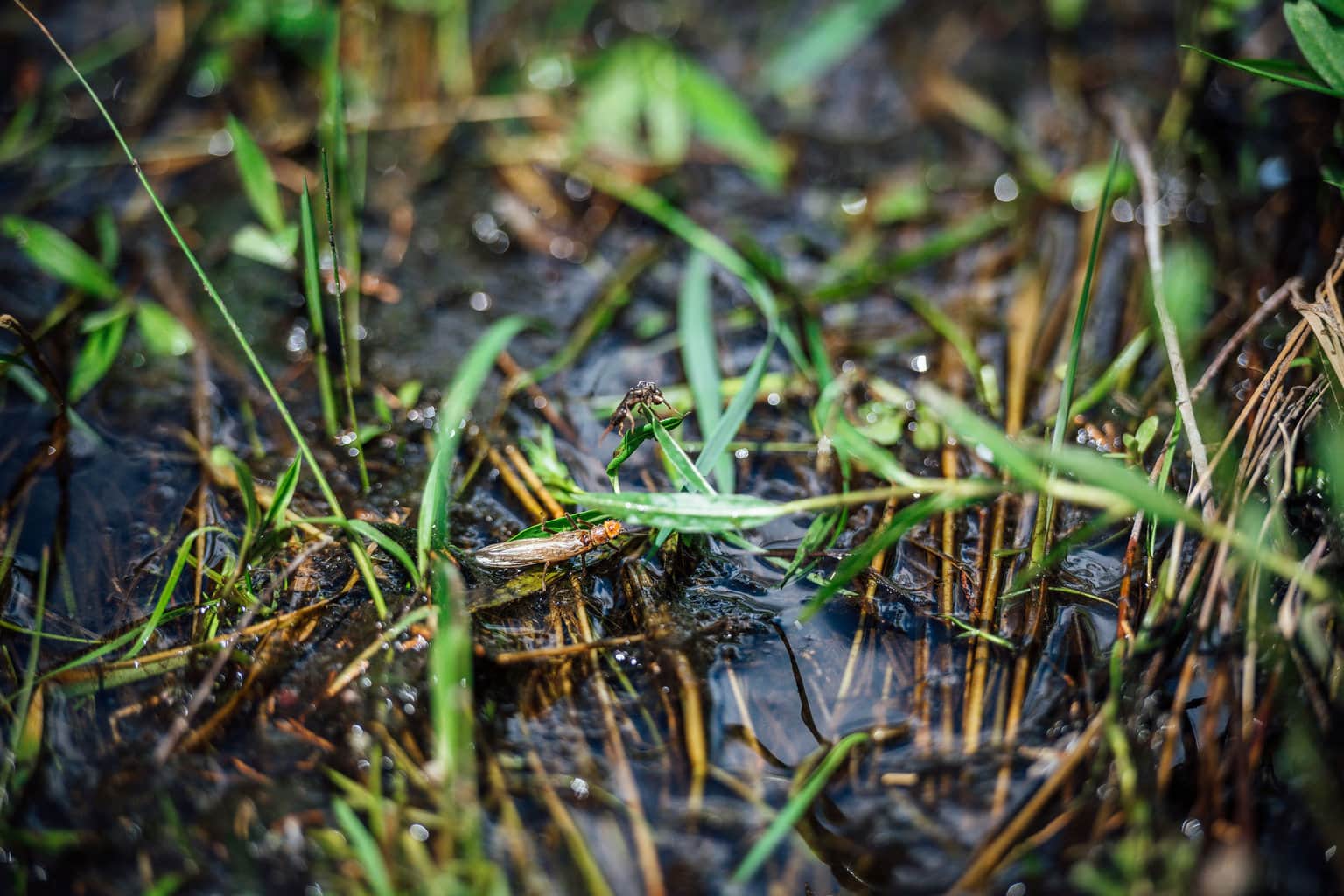
When is the Best Time to Fly Fish the Salmon Hatch in Montana?
As we mentioned above the salmon fly hatch in Montana is un-predictable. Depending on the river, they can start hatching in late May or Early June and in some cases, the hatch can continue all the way through August. Being aware of the environmental factors that affect the salmon fly hatch, will help you guess when the hatch will happen wherever you choose to fish in Montana
Salmonflies begin hatching when water temps reach 55-56 degrees Fahrenheit. Water temperature is affected by many factors, but here are a few to consider: snowpack levels, tail water or freestone stream, river elevation, air temperature, rainfall, and many many more. As a general rule of thumb, the hatch always starts downstream and travels upriver. Having someone in the area who can give you intel on river conditions is critical.
On lower-elevation rivers like Rock Creek, the hatch will happen early in the summer, the first few weeks of June. The longest and largest hatch happens on the Yellowstone River and can last from July into August. Tailwater fisheries tend to have longer hatches, depending on the amount of cold water that is released with dam controlled releases. Of course, this is a double edged sword, as sometimes the powers that be can flood the river and flush the hatch out.
Recommended Reading: How To Fly Fish Stoneflies

Where Are The Best Rivers In Montana To Fish The Salmonfly Hatch
Here is a list of rivers that offer anglers a chance to fish this fabled hatch in Montana. This is not an exhaustive list, and there other spots that offer fly fishermen a solid chance to catch the hatch.
The Rock Creek – Late May or the first week of June
The Big Hole River – June
The Madison River – Late June
The Yellowstone River – July to late July

The Best River’s In Montana to Fly Fish
Missouri River
The Missouri River runs through the heart of Montana. Lewis and Clark forged their way up the wide winding river in 1805 looking for the Northwest Passage. The Missouri is a trout fishing paradise.
Craig Montana is a small ultra fishy trout town with several fly shops. Head Hunters Fly Shop is a solid place to restock any gear. The few times I have been in there, they have been super helpful and friendly.
While much of the river can be fished, the main sections below Holter Dam and Hauser Dam are the most famous. Arguably, the most famous is the section below Hauser Dam. This area of the Missouri River is known as the “The Land of Giants”. It is here that some of the largest brown trout and rainbow trout can be found.
This section of the river is characterized by wide flat water. In many ways, the Missouri River is very similar to fishing the Railroad Ranch section of the Henry’s Fork in Idaho. Flat featureless water with extremely selective trout is the name of the game. The hatches are prolific, and at any given time you could there could be thousands of bugs on the water, all different sizes, shapes, species, and colors. Dry fly fishing for large selective trout is arguably the pinnacle of the sport. Dry fly fishing on the Missouri River is a master class on the art of the dry fly.
Recommended Reading: How Do You Know What Flies Are Hatching?

Madison River
The Madison River is one of my favorite places to fish. In 1994, when I was 14, this was one of our first stops on our family vacation through Montana. I caught my first trout in the Madison. I fell in love with the West.
The Madison River is in the South West corner of the state and the river runs out of the natural dam created by Quake Lake. It is often described as one long riffle. With 120 miles of fishable water, there are never ending options for places to fly fish. The Madison River is excellent for both fly fishing from a drift boat as well as wade anglers looking for rivers in Montana with easy wading access.
Kelly Galloup’s Slide Inn is an amazing fly shop. It is a good place to start for anglers looking for up-to-date information on river conditions, or the latest Kelly Galloup streamer fishing flies. Kelly is usually at the shop helping customers, or busy behind the vice. Most trout anglers of his stature have an ego. He is always kind and ready to dispense his deep streamer fishing knowledge. It is worth a stop.
Classified as a Blue Ribbon river, the Madison River offers anglers just about every fly fishing scenario. There are three sections to the river. The upper river, the middle section, and the lower section. All offer excellent angling opportunities to catch rainbow trout and brown trout. Nymphing, throwing streamers, and fishing dry droppers are all effective means to catch trout on the fly.
While Ennis is a fishy town, there are plenty of places to stay, I always stay outside of town at the Slide Inn or at Three Forks Cabins and RV’s. Both are located riverside giving wading anglers a plethora of wade fishing opportunities.
Recommended Reading: How To Fly Fish Dry Flies

Gallatin River
The Gallatin River is known for its diverse fishing opportunities and epic scenery. Anglers who are traveling to fly fish in Montana and looking for easy access should consider the Gallatin River. Most anglers flying to Montana to fish will land in Bozeman. Bozeman is an easy drive to Gallatin River and a good starting point for your first day on the water with minimal travel.
The Gallatin starts in Yellowstone National Park and flows North towards Big Sky. Eventually, the river flows to the town of Big Fork Montana. Highway 191 parallels the river and offers wading anglers lots of fishing opportunities. Flowing through canyons and open meadows, the scenery is breathtaking and diverse.
The Gallatin is one of my favorite places to fish, as there is a ton of fast, pocket water. Dry dropper rigs, attractor patterns, and a solid euro nymphing setup will get the job done here. A diverse species of fish makes fly fishing in Montana an incredible destination. The Gallatin River is one of those Montana fly fishing rivers that offers it all: brown trout, cutthroat trout, rainbow trout, brook trout, and even a few grayling.
The Riverhouse restaurant and bar is located on the banks of the Gallatin River just outside of Big Sky. Offering barbeque, live music, and cold beer, this is an excellent place to unwind after a full day of fishing.
Recommended Reading: How To Make An Adjustable Dry Dropper Rig

The Yellowstone River
The Yellowstone River is the longest free flowing river in Montana. The headwaters of the Yellowstone originate from Yellowstone Lake (home to massive native cutthroat trout, deep within Yellowstone National Park.) When fly fishing in Montana, the Yellowstone river ranks as one of the most famous rivers amongst a list of storied fisheries.
The Yellowstone River flows North from the North boundary of Yellowstone National Park North East towards Billings Montana. It is a main tributary of the Missouri river. While the whole river holds native trout: cutthroat, rainbow trout, brown trout and the mountain whitefish, the most famous section of the river is the portion that flows through Paradise Valley just South of the town of Livingston Montana.
Where to Fly Fish on the Yellowstone River
While all methods of fly fishing can be done on the Yellowstone, this section of the river is known for large brown trout that will eagerly accept large foam flies. The late summer grasshopper hatch should be noted here. When hot, dry, and windy conditions are present in August and September, and most summer hatches are waning, the grasshopper hatch will bring the largest and weariest of brown trout to the surface. Large and small hopper patterns will entice even the most selective brown trout.
It should be noted too, that Paradise Valley has an extensive network of spring creeks that make for excellent fly fishing opportunities. There are many excellent fly fishing options, but it is hard to choose where to go. The Paradise Valley Spring creeks offer a safe spawning location for fish and add to the overall diversity of the area.
Recommended Reading: Choosing The Right Size Tippet And Leader
DePuy Spring Creek Fly Fishing
Originating from underground aquifers, Depuy spring creek is arguably one of the best trout streams in the world. It is considered to be one of the best year round fisheries in the state of Montana. Trout fishing on Depuy’s Spring Creek requires stealth and strategy to catch the wild trout that inhabit the clear water of this spring creek.
Although Depuys is a small spring creek (10 to 30 yards wide), the water is gin clear and the hatches are immense. All your standard trout fishing water is present: runs, riffles, holes, undercut banks, and flat water. The small nature of the stream, clear water, and abundant number of fish means this particular area receives lots of pressure. Therefore, planning a fly fishing trip to Depuys requires a well-conceived plan. Long leaders, light tippet, and flies that match the hatch are key to success here.
Hatches here are thick and diverse. Not only will you see caddis most of the year, but early summer baetis, mid-summer P.M.D’s, and a strong sulphur hatch will occur. Late summer terrestrials begin to take shape as the hot dry Montana summer takes form. Beetles and hoppers produce both subtle and explosive takes from wild trout prepping for the long winter months.
Recommended Reading: How To Fly Fish Caddis Flies

The Clark Fork River
The Clark Fork River winds its way through central Montana and eventually flows into Idaho. Eventually, meeting with the Columbia River is a major tributary to the Columbia River Basin. A story of resilience, it is Montana’s longest flowing river. It was once considered one of the nation’s most endangered rivers due to excessive copper mining and a waste spill around the town of Butte Montana.
Supporting Native American tribes for centuries, the Clark Fork River, is considered to be the headwaters of the Columbia River Basin. Once home to native bulls, native cutthroat trout, rainbow trout and brown trout, the river was full of life. Copper mining in the late 19th century introduced groundwater and soil contaminants into the river system. Floods and landslides have contributed to further pollution.
In the late 90’s, U.S. Fish and Wildlife designated sections of the Clark Fork as an environmental superfund site. The cleanup of river contaminates has created a fishery on the rebound. The Clark Fork and it’s tributaries are some of the most popular trout rivers in Montana. The re-introduction of native Bull Trout to it’s historic range is a major piece of the restoration project.
Bull trout are native to the Columbia River basin. Although rare, anglers looking to target Bull trout have the opportunity to do so on the Clark Fork. Rainbows and Brown trout can be found in healthy numbers throughout the river system too.
Characterized by wide flat water, fly fishing the Clark Fork offers something for everybody who would like to fly fish in Montana. Rip streamers to the banks, nymph under indicators, or fish dry flies, the Clark Fork is a Montana success story and trout stream on the rise.
Recommended Reading: How To Fly Fish Streamers For Big Fish

Rock Creek
Rock Creek is a tributary to the Clark Fork River. Stunning scenery and wild rainbow and brown trout make this an exceptional fishery for both wade and float anglers. The town of Phillipsburg Montana isn’t too bad either. If you are bringing non-anglers with you, Phillipsburg offers quaint shops, a few restaurants, plenty of history, and lots of Western charm to keep them occupied too.
Public access is plentiful on Rock Creek, as the river flows mostly through national forest. Characterized by bouldery pocket water, riffles and deep runs, the creek is gorgeous. It is not uncommon to see moose, eagles, deer, and bears while fishing.
Hatches are epic, but the most spectacular and arguably most famous is the early summer salmon fly hatch. Trout fishing with large foam flies tight the banks is the name of the game. This is classic Western fly fishing at its finest. The diversity of fish species in Rock Creek also sets this Montana River apart from other Western Rivers.
Brook trout, bull trout, cutthroat trout, and rainbow and brown trout all occupy the same body of water. This affords Montana anglers the rare chance to catch all five species in a single day. This is known as the Montana slam.
The #1 Mapping Resource for Trout Anglers
Over 50,000 trout streams ready for you to explore. Start exploring with the TroutRoutes app today.
The Bighorn River
The Bighorn River exudes a classic Western character. The topography is reminiscent of scenes from Kevin Costner’s Dances with Wolves, classic Western prairies for miles (history buffs will recognize this as one of the West’s most famous rivers, as Custer met his demise not far from Ft. Smith at the Little Bighorn battle site). The trout fishing isn’t too bad either.
With its origins in Wyoming, the Bighorn River flows North into South Central Montana and through the Crow Indian Reservation. While much of the river is fishable, the section of the river flowing through the Indian reservation below Yellowtail Reservoir and centered around the town of Ft. Smith is the main jumping off point for anglers interested in trout fishing the Big Horn.
This is one of those trips that you will want to leave the non-anglers at home on. Ft Smith Montana, leaves much to be desired. Consisting of a restaurant, several fly shops, and trailers with drift boats parked out front, this is all you will find in this South Central Montana fly fishing hot spot. There are few reasons to be in Ft. Smith Montana. Fly fishing the Big Horn is the main one.
The Bighorn River boasts abundant populations of large rainbow and brown trout. The Bighorn River is best fished from a drift boat. I have done several early season fishing trips here, and the spring caddis hatches can be epic. Millions of black caddis cover the surface of the water, resulting in excellent dry fly fishing.
As the hot Montana summer drags on, this area of the state often sees an explosion in the grasshopper population. The result is large brown trout eat foam hopper patterns thrown to banks. This is Western trout fishing at its finest. There are other fish to fly fish for too, making this a multi-species destination
In recent years, fly anglers in the area have begun to develop the carp fishery in Yellowtail Reservoir as a viable fishery. While considered a trash fish by many, large carp in the lake will cruise the surface. Looking for terrestrials and other food items, they are susceptible to eating dry flies. This makes the Bighorn River a unique fishery that shouldn’t be missed when fly fishing in Montana.
Recommended Reading: How To Fly Fish Grasshoppers And Terrestrials
Smith River Fly Fishing in Montana
The Smith River is a precious resource. It is one of the few Montana rivers affording anglers the rare opportunity to experience multi day over night fly fishing in Montana. Located South of Great Falls Montana, there are numerous feeder creeks and tributaries to the Smith River offering anglers opportunities to trout fish this exceptional river for big trout. The most popular section is the 60 mile permit only stretch of the river that offers a 5 day over night float trip.
Fished from a raft, anglers launch their boat at Camp Baker. This starts the a multi-day wilderness float fishing trip through mountain meadows and canyons lined with limestone cliffs. Once anglers are committed to the journey there is little opportunity to gather further supplies, so packing a raft with all the essential fly fishing gear and camping equipment is essential. The number of float fishing permits are limited, so even seeing other anglers can be a rare sight.
Rainbow and brown trout are plentiful, and they often behave like trout that don’t see much pressure. In other words, they will eat just about anything. Good old fashioned attractor dry flies, your standard nymph patterns, and of course, streamers all work well. This is a freestone stream, so in the early season, the water will run muddy and high. In these conditions, it is best to throw streamers or large attractor nymphs. Even if the fishing is not good, the scenery alone is worth the trip. If you’re thinking about fishing in Montana, then this should be on your list of Montana rivers to fish.

Blackfoot River
The Blackfoot River is maybe one of the most famous rivers in America. Putting fly fishing in Montana on the map, was the primary location in the movie A River Runs Through It Was Filmed. If you have seen that movie, then you know that the scenery is spectacular. The fishing isn’t bad either.
Missoula is nearby. Like most of Montana’s larger towns, the area has been transformed by a post-COVID influx of out-of-staters. Good and bad, the explosion has brought a dynamic mix of high end restaurants, bars, nightlife, and shops. The result is a transformation of this once sleepy Western town into a hip micro Denver. The advantage is that this is an excellent place to bring non-anglers, thus giving you plenty of options to keep them interested while you slay fish on the Blackfoot River.
Any river with native trout is special, but the Blackfoot River offers anglers solid shots at both native cutthroat and wild rainbow trout. The Blackfoot River can be fished by wading or float fishing. Bouldery pocket water makes this river an ideal place to fish a dry dropper rig or single pieces of foam to slower sections of water holding cutthroat. Attractor fly patterns, jig head nymphs, foam hoppers, and large pieces of foam all work well.
Recommended Reading: How To Fly Fish Nymphs

The Big Hole River
The Big Hole River is one of my favorite rivers to fish in southwest Montana. In many ways, it reminds me a lot of the South Fork river in Idaho. The difference is, unlike the South Fork, it is a freestone river that has its origins high in the mountains of South West Montana. The Big Hole River flows through diverse terrain and offers multi-species trout fishing in Montana.
Grayling and Brook trout can be caught at high altitudes in the headwaters of the Big Hole River. As the elevation falls and the river enters the canyon portion of the river from Wise River to Melrose Montana, the river widens and it becomes a brown and rainbow trout fishery.
In early spring and summer when runoff is occurring, float fishing from a drift boat is the preferred method of fishing here. Riffles, shelves, and fishing to the banks all produce fish depending on the hatch. The early season caddis hatch can be epic here, and will offer anglers the first shot at some of the best dry fly fishing of the spring.
As the river flows out of the canyon, from Melrose Montana to Twin Bridges Montana, it flattens out and enters farms and ranches with extensive hay fields. Larger browns occupy this stretch of the river. The late summer hopper hatch can be exceptional too depending on the weather. Here, anglers are afforded the opportunity to cast hopper patterns tight to grassy banks, in the hopeful expectation that a large brown trout will blow the fly up.
The #1 Mapping Resource for Trout Anglers
Over 50,000 trout streams ready for you to explore. Start exploring with the TroutRoutes app today.

Stillwater Fishing In Montana
I’ll be honest, still water fishing isn’t really my jam. That being said, fly fishing in Montana has some of the best still-water fishing the world. There are too many to list here, but a few standout as exceptional places to fish lakes in Montana. The three lakes listed below were picked because the fishing is epic, the scenery is beautiful, and they are all a stone’s throw from each other in South West Montana. This makes them accessible in a single trip with minimal driving. Stillwater junkies will have plenty of water to fish and can maximize their angling time.
Wade and Cliff Lakes
Wade and Cliff Lakes are often referred to as the Caribbean of the West. Their incredible color and scenic backdrop make them some of the prettiest lakes in the country. In addition, they are just a few minutes from the Madison River. You cross the famous Three Dollar Bridge on the way to the lakes. Anglers can utilize access to both stillwater fishing and river fishing in the same day.
Loaded with large rainbow and brown trout, trout fishing here can be epic (the once state record 20 lbs. rainbow was caught here). The Callibaetis hatch is reliable. When the hatch is on, fish are high up on the surface in every direction.
Wade Lake offers some of the best lake fishing I have ever experienced. Due to the crystal clear water, anglers can see fish for cruising fish on flats and out in open water. It feels more like sight fishing in clear inshore coastal water with small dry flies, than your standard slow strip retrieve or bobber chironomid fishing. The lake is best fished by boat or float tube. Fortunately, Wade Lake has a small lodge that offer anglers everything they need.
Wade Lake Cabins are right out of the 1930’s. There are multiple wooden cabins, all of different shapes, and sizes to accommodate different sized groups. They offer jon boat rentals with small outboards as well. If they are full, there are several primitive campgrounds for campers.
Recommended Reading: How To Fly Fish Stillwater Lakes

Hebgen Lake
Hebgen Lake is arguably one of the most famous lakes for still water fly fishing in Montana. There are large rainbow and brown trout present. Hebgen Lake also offers anglers an opportunity for trout fishing for large native West Slope Cutthroat trout.
The lake is massive, so fishing from some sort of boat is the best way to access the lake. There are numerous access points on all sides where watercraft can be launched. Ice off to fall is the best time of the year to go. Small streamers, chironomids under an indicator fished deep, and stripping small nymphs will produce fish.
The Trico and Callibaetis hatches, plus the size of the fish are what make the lake famous. When these hatches are occurring, fish from 17-25 inches can be seen sipping naturals on the lake’s surface. Matching the hatch is critical, and the fishing can be technical. That being said, it gives every angler an opportunity to catch a fish of a lifetime on a small dry fly.
Recommended Reading: How To Fly Fish Tricos
Quake Lake
Quake Lake is the headwaters of the Madison River. Formed by a massive landslide as the result of an earthquake in 1959, it killed 28 people and created a natural dam that resulted in the lake. Quake Lake is unique in that offers a chance to fish the Spruce Moth hatch in still water.
The Spruce Moth is a nuisance to farmers and ranchers. For fly fishermen, they offer a fun hatch to fish that both anglers and fish enjoy. White, grey, or mottle brown in color, they fall to the water and flap their wings. They are similar to caddis in shape, size, and behavior. Trout are opportunistic eaters, and the spruce moths arrive later in summer when hatches dwindle. This makes them a viable food source.
Set amongst dead towering pine trees, a remnant from the catastrophic landslide and sudden flood, anglers are offered a challenging experience of casting small dry fly spruce moth patterns to rising fish amongst dead timber. Rainbows, Browns, and Cutthroat are all present in the lake.
Recommended Flies for Fishing In Montana
While every angler has their preferences, here are some of my favorite flies that I would recommend for a fly fishing trip to Montana. These are my own preferred flies and I am sure many of you out there will have your own favorites too.


X Caddis and Elk Hair Caddis – The adult and emerger patterns are excellent flies to carry with you at all times. Caddis are the longest and most abundant insects in most river systems. Therefore, fishing these in tandem with each other allows you to prospect and match the hatch on most rivers. They also cover two portions of the hatch: the elk hair caddis covers adults on the surface, and the X caddis covers emergers lower in the surface film.


Jig Head CDC Pheasant Tail and Jig Head Hare’s Ear – Most aquatic insects are either brown or grey in color. Therefore, both of these patterns will cover a variety of hatches, i.e. most caddis and mayfly species. They offer anglers lots of crossover and versatility no matter where they fish. In addition, when tied with a tungsten bead head weight, they get deep. They can be nymphed under an indicator or fished off a large piece of foam for dry dropper situations.


Pat’s Rubber Leg – Don’t enter the state of Montana without it. This fly works all year and catches fish. Larger sizes in sizes #4 and #6 can be nymphed deep early in the season for the salmonfly hatch. As the season progresses, downsize to #8’s, #10’s and even #12’s.


The Mop Fly – The mop fly burst onto the scene in the competition fly fishing world. Nobody knows what it represents, but when nymphed, it is a trout catching machine.

Split-Back Sulpher -This is one of my favorite flies when fishing the P.M.D. hatch. When P.M.D.’s and golden stones are on the water, this fly nymphed in conjunction with a size #8 or #6 Pat’s Rubber Leg under a strike indicator is deadly. It can also be fished on a greased leader in the surface film to fish eating emergers.

Chubby Chernobyl – The Chubby Chernobyl is the perfect fly for the salmonfly hatch. It works well when the hoppers are in full swing too. It can float droppers in a dry dropper rig as well, even larger rubber legs.

Missing Link Caddis – The missing link caddis is a well rounded fly that can be fished as both a caddis or mayfly. It can be trimmed if need be, to make it more of a mayfly shape. It sits low in the water and is exceptionally good at fooling trout that are sipping emergers.

Streambank Hopper – Streambank Hopper is an excellent choice for late summer hopper hatches. Fished tight to banks or drifted off shelves, this hopper pattern rides low in the water but has plenty of buoyancy to float a dropper nymph too.
Montana Fishing Guides and Outfitters
If you are looking for a guide in Montana, there are many to choose from. I would encourage you to do your research. In my experience, it is best to choose guides based on recommendations from other anglers. If you do not know anybody who has fly fished in Montana before, then choose a reputable fly shop. Below are some of the state’s best.
Kelly Galloup’s Slide Inn
Offering R.V. spots, cabins, guides, and one of the best fly shops around, the Slide Inn is an excellent resource for fishing the Madison and surrounding lakes: Hebgen, Quake, Wade, and Cliff Lakes.
Head Hunters Fly Shop, Craig Montana
Head Hunters Fly Shop is the go-to outfitting service for fly fishermen who want to explore the Missouri River and surrounding tributaries. Head Hunter’s guides not only put you on fish, but they also focus on teaching.
Yellowstone Angler, Livingston Montana
The few times I have been in the Yellowstone Angler, the staff is friendly and the guides have a great reputation. Anglers should look here for guides to float fish the Yellowstone River and guidance with the Dupuy Spring Creek.
Blackfoot River Outfitters, Missoula Montana
An excellent fly shop with a full roster of un-pretentious guides, Blackfoot River Outfitters can put you on fish in the Missoula area. Guiding trips on Rock Creek, The Bitterroot River, The Blackfoot River, and The Clark Fork, there are hundreds of miles of river to float here.
Bighorn Angler
The Bighorn Angler offers fly fishermen everything they need in one spot. They have multiple lodging options. I have stayed with them on previous trips. The accommodations were nice. The full-service fly shop offers guides as well as drift boat rentals. We rented a drift boat here. They also ran our shuttle for an additional cost. The river is easy to row, so for most this is an excellent option. If rowing isn’t your thing or you are a single angler, then they have a full guide roster as well.
Fly Fishing Made Easy 👍
Our Quarterly Fly Club ships 1,000’s of flies to anglers all across the United States. Receive curated fly assortments selected for the season with in-depth articles on how to fish them. Great for beginners to learn and for intermediates to discover new flies.



